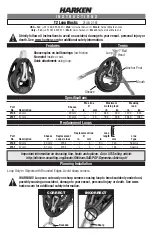
– Use the footswitch to activate Power Cut.
The alarm message “A-0C: NE contact: resistance too high” will appear. The message is displayed on
the screen against a yellow / orange background. A “medium priority level” acoustic signal will be
sounded continuously until the alarm condition has been resolved. The device cannot be activated.
– Deactivate the footswitch.
– Move the symmetry / resistance test box connection from no. 7 to no. 8.
The NE indicator on the device should be lit up green.
– Use the footswitch to activate Power Cut. The device will be activated with no alarm messages.
– Use the footswitch to deactivate Power Cut.
– Leave the device switched on.
4.3.8 Testing the NE monitoring critical resistance (NE
double-faced)
– Using an adapter cable, connect the NE cable to connections no. 9 and 10 on the symmetry /
resistance test box.
– In Device Setup, set the NE type to double-faced.
Note:
Testing is performed with no load.
– The NE indicator on the device must light up red.
– Use the footswitch to activate Soft Coag.
The alarm message “A-0C: NE contact: resistance too high” will appear. The message is displayed on
the screen against a yellow / orange background. A “medium priority level” acoustic signal will be
sounded continuously until the alarm condition has been resolved. The device cannot be activated.
– Deactivate the footswitch.
– Move the symmetry / resistance test box connection from no. 10 to no. 11. The NE indicator on the
device should be lit up green.
– Use the footswitch to activate Power Cut. The device will be activated with no alarm messages.
– Deactivate the footswitch.
– Leave the device switched on.
– Move the symmetry / resistance test box connection from no. 11 to no. 12. The NE indicator on the
device should light up red.
– Use the footswitch to activate Power Cut. The alarm message “A-0B: NE contact: resistance too low”
will appear. The message is displayed on the screen against a yellow / orange background. A “medium
priority level” acoustic signal will be sounded continuously until the alarm condition has been resolved.
The device cannot be activated.
– Deactivate the footswitch.
– Leave the device switched on.
Figure 4.4
4-6
12.06 / V1.0
AUTOCON
®
II 400
MODEL 205352 20-1
Summary of Contents for 205352 20-1
Page 8: ......
Page 9: ...AUTOCON II 400 AUTOCON II 400 AUTOCON II 400 20 5352 20 11x 20 5352 20 11x 20 5352 20 11x ...
Page 10: ......
Page 13: ...III Geräteabbildungen Photographs of the equipment Imágenes del equipo ...
Page 14: ...IV W R Q Geräteabbildungen Photographs of the equipment Imágenes del equipo I O Y U T E ...
Page 146: ......
Page 152: ......
Page 156: ......
Page 158: ......
Page 172: ......
Page 186: ...Figure 4 11 Figure 4 12 Figure 4 13 4 14 12 06 V1 0 AUTOCON II 400 MODEL 205352 20 1 ...
Page 192: ......
Page 198: ......
Page 200: ......
Page 202: ......
Page 203: ......
















































